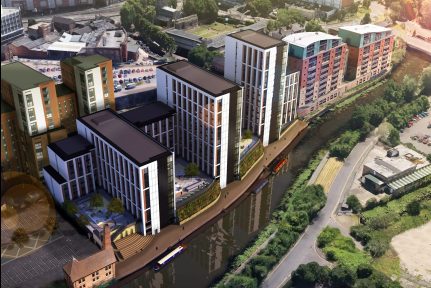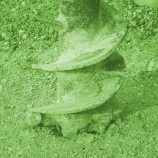Phase 1 Desk Study Report
A Phase 1 desk study report and site walkover survey is the initial stage in ground investigation and establishes geology, hydrology, history and the environmental setting and sensitivity of a site. This includes a preliminary contamination risk assessment tailored towards the current and historical use of the site. This is generally required as part of the planning process when developing sites.
Phase 2 Ground Investigations
A Phase II ground/site investigation is conducted to provide a site-specific contamination risk assessment and/or geotechnical investigation to determine the requirements for remedial measures and to aid with foundation design. A Phase 2 investigation can also include determining the feasibility of soakaways and concrete classification. Ground investigation techniques may include digging trial pits, sinking boreholes, insitu testing and obtaining samples for laboratory analysis to enable reporting on both geotechnical and environmental issues.
Geo-environmental and Geotechnical Investigations
PRP undertake all types of site investigations on all types and scale of developments. PRP carry out phase 1 (desktop study) and phase 2 investigations by means of test pits, window samples or boreholes as appropriate. As part of this process we carry out infiltration testing for SuDs designs.
We can also undertake soils testing – both geotechnical and contamination. The whole of the above is then encapsulated in a comprehensive concise geotechnical and geo-environmental report including full contamination assessments in accordance with planning law requirements.
Trial/Test Pits
A trial pit (or test pit) is an excavation of ground in order to study or sample the composition and structure of the subsurface, usually dug during a site investigation, a soil survey or a geological survey. Trial pits are dug before construction to determine the geology and ground water conditions existing on site.
Trial pits are usually between 1 and 4 metres deep, and are dug either by hand or using a mechanical digger.
Window Sampling
Window sampling or windowless sampling is a technique used to bore through shallow soft soils to investigate the substrata in order to gain a profile of the ground conditions and to facilitate soil sampling for chemical and geotechnical analysis.
Window sampling can be used for the investigation of contaminated land, for geotechnical investigations and for the installation of ground gas and groundwater monitoring wells.
Contamination Testing
Contamination testing is generally required as part of the planning approvals process when a site is being developed, as part of the due diligence process during a land purchase, following a pollution incident, to characterise materials for waste disposal purposes or as part of a site condition or verification report.
Ground Gas Monitoring
Ground gas monitoring is undertaken to determine the levels of methane, carbon dioxide, oxygen and other gases which can be generated by made ground or natural deposits. The gas flow is dependent on the atmospheric pressure at the time the readings are taken. Gas monitoring is conducted to determine if ground gas protection measured are required for the development.
Rotary Boreholes
Rotary drilling is used to form a deep observation borehole for obtaining representative samples of rock. The drilling method involves a powered rotary cutting head on the end of a shaft, driven into the ground as it rotates. The system requires lubrication (air, water or drilling mud) to keep the cutting head cool.
Soakaway Test (Soil Percolation)
Soakaway Tests often referred to as infiltration or percolation tests determine whether the ground is suitable for soakaways (surface water drainage). They are widely used to support planning and development applications, using a natural drainage system to store the immediate surface water run-off allowing natural dissipation and attenuation. This is usually required by the lead local flood authority and sometimes the regional water company.








